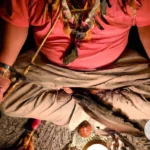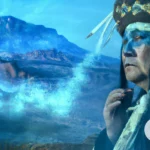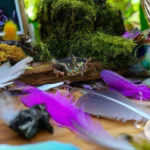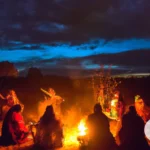South American shamanism is an ancient spiritual tradition that has been practiced for centuries by various indigenous communities. At its core, shamanism involves using plants, rituals, and ceremonies to achieve a connection with the spiritual world and to heal afflictions of the mind, body, and spirit. One of the most fascinating aspects of South American shamanism is the central role that community plays in its practice. In this article, we will explore the importance of community in South American shamanism, its significance in preserving cultural traditions, and the challenges it faces in today’s rapidly changing world.
The Roots of Shamanism in South America
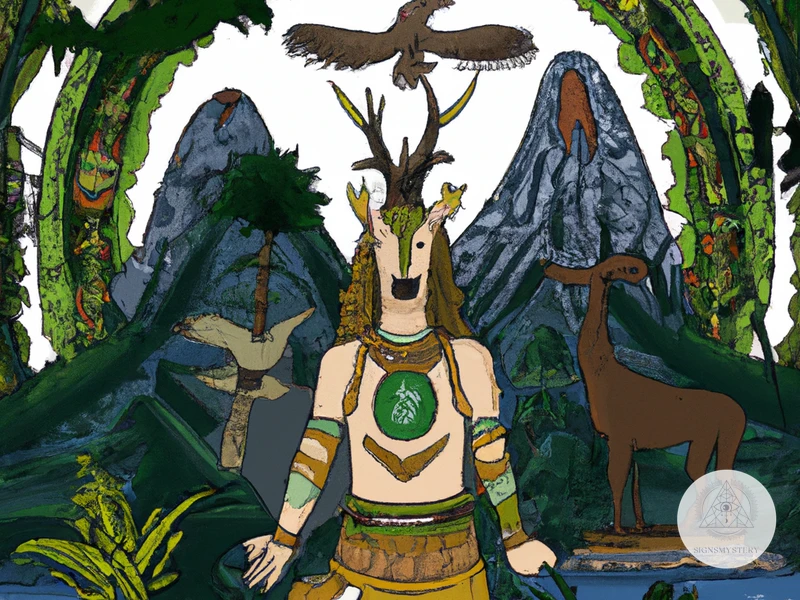
Shamanism has deep roots in South American indigenous cultures. For centuries, these communities have relied on their knowledge of natural remedies and practices for healing. They have revered the sacredness of nature, including plants and animals, as vital to their spirituality. Ayahuasca, a powerful psychedelic brew made from Amazonian plants, has been used among many traditional cultures for thousands of years as a means of spiritual and physical healing. The role of the shaman, or “curandero,” has been instrumental in the preservation and continuation of these practices. Their connection to the spirit world and their ability to communicate their knowledge through music and ceremony has been essential. The impact of colonization and Catholicism on these indigenous traditions has been significant, but the resilience of these communities has allowed them to continue practicing and preserving their ways to this day.
The Practice of Ayahuasca
has been an integral part of South American Shamanism for thousands of years. Ayahuasca is a powerful medicinal brew made from the ayahuasca vine and other plants that are native to the Amazon rainforest. The brew is consumed during carefully conducted ceremonies, in which a shaman plays a central role.
Ayahuasca is considered a sacred plant medicine that allows the shaman and participants to communicate with the spirit world and gain insight into their lives. The active ingredient in ayahuasca is DMT, which has a powerful psychedelic effect. The shaman guides the ceremony, singing icaros (sacred songs) and blowing tobacco smoke to protect and support the participants during the journey.
The experience of Ayahuasca is often described as a powerful journey into one’s subconscious mind, where they can confront and overcome their fears, traumas, and negative patterns. By exploring their inner world and gaining new perspectives on their lives, participants can find healing and transformation. Ayahuasca is also said to enhance creativity, intuition, and spiritual awareness.
While Ayahuasca has gained popularity in recent years in Western cultures for its potential therapeutic benefits, it is important to note that it is a powerful medicine that should be respected and used only under the guidance of experienced and ethical shamans.
To learn more about the role of Ayahuasca in South American Shamanism, you can check out our article on South American Shamanism and Ayahuasca.
The Role of the Shaman
The Role of the Shaman is crucial in South American Shamanism, as they are the intermediaries between the spiritual world and the physical world. Below are some of the significant roles they play in their community:
| Shaman’s role | Description |
|---|---|
| Healer: | The Shaman is a healer who uses various techniques such as the use of medicinal plants, spiritual ceremonies, and soul retrieval to heal their patients’ physical and spiritual illnesses. Some of the most commonly used medicinal plants in South America include Ayahuasca, San Pedro, and Coca leaves. They are responsible for understanding the healing properties of plants and their preparation. |
| Diviner: | The Shaman acts as a diviner who is responsible for understanding the spiritual world and communicating with spirits. They use various techniques such as shamanic journeys, trance, and dream interpretation to communicate and understand messages from the spiritual world. These messages could be in the form of omens, dreams, or visions which they then interpret for their community. |
| Protector: | The Shaman is also responsible for protecting their community from spiritual harm. For instance, they can perform ceremonies to protect their community from diseases, natural disasters, and evil spirits. They are also responsible for creating and maintaining a harmonious relationship between humans, animals, and plants. |
| Advisor: | The Shaman acts as an advisor to their community providing guidance on personal growth or social issues, as well as spiritual and religious guidance. They provide guidance on day-to-day activities such as marriage, birth and coming of age ceremonies, and death rituals. They also act as mediators during conflicts in their community. |
| Ceremony facilitator: | The Shaman is responsible for facilitating various spiritual ceremonies in their community. These ceremonies are essential for various occasions such as the celebration of harvest and hunting, and coming of age rituals. They are also crucial in cleansing ceremonies which are meant to purify both the individual and the community. Through these ceremonies, they promote the spiritual wellbeing of the community by fostering unity and solidarity. |
South American Shamanism has continued to evolve over the years, but the role of the Shaman remains critical in the community, providing healing, protection, guidance, and spiritual and religious advice. To learn more about South American Shamanism, you can check out this article on medicinal plants, this one on soul retrieval, and this one about the music associated with it.
Community in Shamanism
One of the defining aspects of South American shamanism is the emphasis on community. Shamanic practices, such as healing ceremonies and plant medicine rituals, are often done in the presence of a supportive community. This sense of community is crucial in shamanism as it serves as a support system for individuals and provides a platform for cultural preservation. The interconnectedness of community members also reinforces the belief that all living things are interconnected and affect each other. In South American shamanism, the community plays an integral role in the practice and is a crucial aspect for both personal and cultural healing.
Support System
In South American shamanism, the community plays a significant role in providing support to the shaman during ceremonies. The shaman serves as a conduit between the spiritual realm and the physical world, and it is essential that they feel supported during the often intense and physically demanding process.
The community members contribute to the support system in several ways, including:
| 1. | Providing emotional support and encouragement to the shaman. |
| 2. | Preparing the ceremonial space, including building the fire and setting up altars. |
| 3. | Chanting and singing icaros (sacred songs) to maintain the spiritual energy of the ceremony. |
| 4. | Keeping the shaman hydrated and providing food during the ceremony. |
| 5. | Protecting the ceremonial space and the shaman from outside distractions or disturbances. |
The sense of community during a shamanic ceremony is crucial to its success. It allows for the shaman to focus solely on their work with the plant spirits, while the community holds space for them and maintains the energetic frequency of the space.
In Andean shamanism, for example, the community is called the ayllu, which is similar to a spiritual family. The ayllu is responsible for providing support and resources to the shaman throughout their life.
The community support system in South American shamanism is a testament to the value placed on connection and collaboration within this spiritual tradition.
Learn more about the differences between Andean and Amazonian shamanism.
Cultural Preservation
The Importance of Cultural Preservation in South American Shamanism
Cultural preservation is a significant aspect of South American shamanism, as it ensures that traditional beliefs, practices, and knowledge are passed down from generation to generation. South American shamanism is deeply rooted in the indigenous cultures of the region, and preserving these traditions is crucial for the survival and identity of these communities.
One way that cultural preservation is achieved is through the use of sacred plants and animals in shamanic rituals. In many indigenous cultures, certain plants and animals are believed to have spiritual power and significance, and their use in ceremonies is integral to the shamanic practice. For example, the ayahuasca vine is an essential element of shamanic rituals in many South American cultures and is believed to possess healing properties.
Another way cultural preservation is promoted is through the telling of myths and creation stories within the community. These stories often contain important lessons and values that are central to the indigenous culture. The stories are passed down orally from generation to generation to ensure that they are not lost or forgotten.
Community events and festivals, such as the Inti Raymi festival in Peru, also play a vital role in cultural preservation, as they provide an opportunity for indigenous peoples to come together to celebrate their traditions and heritage. During these events, traditional costumes, dances, and music are performed to maintain and promote cultural practices.
Despite the efforts to preserve indigenous cultures, South American shamanism has faced many challenges throughout history, including the impact of colonization and Catholicism. As such, there is a growing awareness among indigenous communities about the need to protect and preserve their cultural heritage for future generations.
Cultural preservation is a vital component of South American shamanism, as it helps to ensure the survival and identity of indigenous communities. Through the use of sacred plants and animals, storytelling, and community events, indigenous cultures are being preserved and promoted.
Interconnectedness
One of the core beliefs of South American shamanism is the idea of interconnectedness. The shamans believe that everything in the natural world ─ plants, animals, humans, and even rocks ─ is connected and part of a larger, cosmic whole. This concept is referred to as “Pachamama” and is central to the practice of shamanism in South America.
Through shamanic practices such as rituals and ceremonies, people in South American communities connect themselves with the spiritual world and with each other. By doing so, they acknowledge their place in the interconnected ecosystem. They believe that everything they do has an effect on the world around them, and vice versa.
This belief in interconnectedness is reflected in the ways that these communities care for the natural environment. They understand that they are a part of the natural world and do not rule over it, but instead coexist with it. This is why sacred plants and animals play such an important role in shamanic practices, as they are believed to hold their own spiritual energy that can connect people back to the earth.
This interconnectedness is not just limited to humans and the natural world around them, but also within the community itself. By participating in healing ceremonies, people in the community support each other and create a web of support and interconnectedness that allows for the sharing of knowledge, culture, and experiences.
The belief in interconnectedness is a fundamental aspect of South American shamanism. It shapes how these communities interact with the world around them, care for the environment they inhabit, and support each other in times of need. The idea of interconnectedness can be experienced in many different ways, including through participant in a shamanic journey, and it continues to be a central tenet of shamanic practice in South America today.
The Shaman-Community Relationship
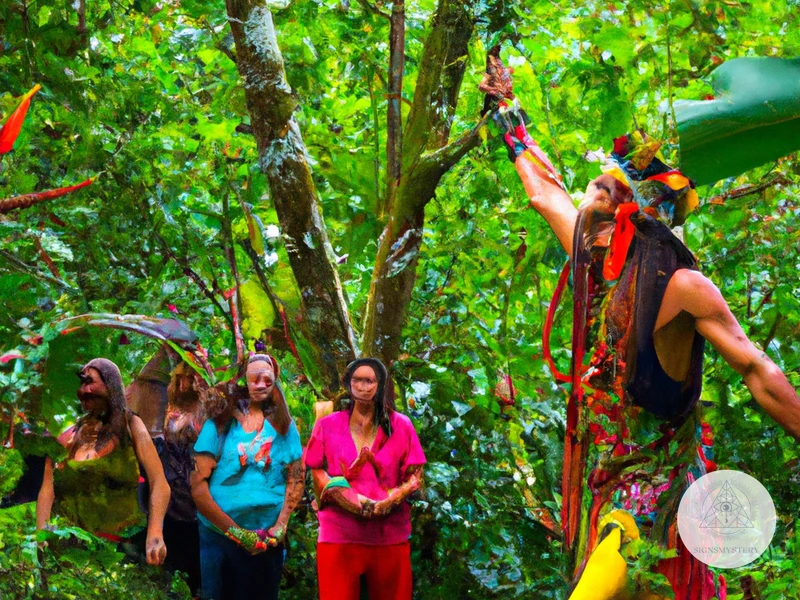
The relationship between the shaman and their community is vital in South American shamanism. Shamans act as a bridge between the physical and spiritual worlds, helping their community members connect with the spiritual realm. In turn, the community provides support and protection to the shaman. This relationship is strengthened through shared experiences and trust.
The Mutual Dependence of Shaman and Community
The shaman is an essential member of the community, and their presence is vital in many aspects of community life. The shaman serves as a healer, advisor, and spiritual guide for the members of their community. In turn, the community members provide emotional and physical support to the shaman. The shaman requires this support to maintain their connection to the spiritual realm and to continue providing healing services to the community.
The Importance of Trust in the Shaman-Community Relationship
Trust is essential in the shaman-community relationship. Building trust takes time, and it is critical for the shaman to maintain a reputation for honesty and integrity. The community must trust that the shaman is acting in their best interest and providing accurate spiritual guidance. In turn, the shaman must trust that their community members will support them and protect them from harm.
The Role of Shared Experience
Shared experiences are a significant part of the shaman-community relationship. Ceremonies and rituals are often communal experiences that bond the community and the shaman. Sharing experiences creates a sense of unity and interconnectedness, which is essential to the shaman’s connection to the spiritual realm. The shaman and community members often share in the physical and emotional experiences of healing ceremonies, which creates a bond that strengthens the shaman-community relationship.
Challenges to the Shaman-Community Relationship
The shaman-community relationship faces challenges in the modern world. Urbanization and globalization can disrupt traditional ways of life, making it difficult for shamans to maintain their spiritual connections. The interference of outside influences may also challenge the trust between the shaman and their community members. It is essential for the shaman to adapt to new challenges while maintaining the core values of trust and shared experience.
The shaman-community relationship is a critical component of South American shamanism. This relationship is built on trust, shared experiences, and mutual dependence. The challenges that this relationship faces require shamans to adapt while maintaining the traditional values of trust and community. The shaman-community relationship is a beautiful bond that provides support, healing, and spiritual guidance to both the shaman and their community members.
Challenges to Community Support
The role of community in South American shamanism faces many challenges in modern times, particularly with urbanization and globalization. Traditional ways of life are disrupted as urban centers grow and modern lifestyles become more prevalent. This can lead to a loss of cultural identity and knowledge as younger generations become disconnected from their cultural roots. Additionally, outside influences can interfere with the
Subscribe to Our Newsletter
Sign up to receive the latest news and updates.
Urbanization and Globalization
Urbanization and globalization have both had a significant impact on shamanic communities in South America. As cities grow and expand, indigenous peoples often feel pressured to move away from their traditional lands and ways of life. This dislocation can be traumatic, leading to a loss of cultural identity and traditional knowledge.
Challenges of Urbanization
As more and more people move from rural areas to urban centers, there is a growing disconnect between shamanic traditions and the modern world. This disconnect can be seen in the lack of access to natural resources and the interruption of traditional practices. Additionally, changes in weather patterns and increased pollution further deteriorate traditional practices, posing certain health risks.
The Pressure of Globalization
Globalization has brought about many changes to shamanic community life in South America. In many cases, modernization has led to a shift away from traditional practices and beliefs, as people begin to adopt more Westernized attitudes. As economies develop, traditional forms of subsistence are often replaced with market-based systems, leading to drastic changes in cultural practices.
Efforts to Preserve Community
Despite these challenges, the shamanic communities have worked relentlessly to maintain their way of life in the face of these challenges. Indigenous groups have been working to preserve their cultural practices and the knowledge that has been passed down from generations in various ways. These efforts include collaborations with conservationists to preserve and protect the local environment, as well as promoting traditional healthcare practices and alternative medicine.
Conclusion
Urbanization and globalization have brought many challenges to shamanic communities in South America. However, these communities have persevered and maintained their cultural practices through profound adaptivity and collaborations. As we move forward, there is a vital need to recognize the value of shamanic traditions and the importance of preserving these ways of life for future generations.
Interference with Traditional Ways
The increasing pressures of modernization, coupled with the spread of Christianity, have led to interference with traditional shamanic practices. Many indigenous communities have been forced to assimilate to the dominant culture, resulting in the loss of their traditional ways.
Urbanization
Rapid urbanization has led to the displacement of communities from their ancestral lands. The loss of land means a loss of access to medicinal plants and other resources that are essential to shamanic practices. Urbanization also leads to the breakdown of traditional social structures, making it difficult for shamans to pass on their knowledge and skills to the next generation.
Conversion to Christianity
Many indigenous communities have been converted to Christianity, which often sees shamanism as a form of witchcraft and demon worship. This has led to the persecution of shamans and the suppression of traditional practices. In some cases, communities have completely abandoned their shamanic practices in favor of Christianity.
Westernization
The spread of western culture has also had an impact on traditional shamanic practices. Western medicine, for example, has become the preferred method of healthcare in many communities, leading to a decline in the use of traditional remedies. The rise of materialism and consumerism has also led many young people to abandon traditional ways in favor of more modern lifestyles.
Interference with traditional shamanic practices is a major challenge facing indigenous communities in South America. The loss of land, conversion to Christianity, and westernization, all threaten the survival of traditional shamanic practices. It is important to find ways to preserve these practices while also allowing these communities to adapt to the modern world.
Community Healing Ceremonies
Community healing ceremonies are a fundamental aspect of South American shamanism. These ceremonies are typically held in communal spaces, with the intention of bringing healing and balance to the entire community. The ceremonies can last for hours or even days and are intended to address a wide variety of issues.
During community healing ceremonies, the shaman leads the group in various rituals, such as singing, chanting, and meditating. The shaman also administers various herbal medicines and offers guidance to participants as they navigate their healing journeys. The healing ceremonies are often accompanied by other community members, who provide support and encouragement to those seeking healing.
One of the key principles of community healing ceremonies is the belief that the healing of one individual is tied to the healing of the entire community. As such, participants are encouraged to not only focus on their own personal healing but also to hold space for the healing of others. This interconnectedness is at the heart of South American shamanism and is a powerful aspect of community healing ceremonies.
Through these ceremonies, individuals can release old wounds, find clarity and purpose, and reconnect with their community. The positive effects of community healing ceremonies are often felt long after the ceremony is over, as participants experience a renewed sense of purpose and connection to those around them.
However, as globalization and urbanization continue to spread across South America, many traditional community healing ceremonies are at risk of being lost. The increasing influence of Western culture has led some younger generations to view traditional practices as outdated or even shameful, further threatening the preservation of these important cultural traditions.
Community healing ceremonies are a significant part of the South American shamanic tradition, and their importance cannot be overstated. These ceremonies offer a space for individuals to find healing, connection, and purpose, all while contributing to the greater good of the community. As such, it is essential that these practices are preserved and continued for future generations to come.
Conclusion
Upon studying the role of community in South American Shamanism, it becomes clear that community plays an integral part in the practice of Shamanism. The shaman interacts with the community to heal and to maintain the balance at the spiritual, emotional, and physical levels. In turn, the community provides support, respect, and recognition to the shaman. The relationship between the shaman and the community is based on the ideals of interconnectedness and cultural preservation.
The community provides a support system that enables the shaman to perform their duties effectively. The members of the community offer support in various forms such as financial, physical, and moral support. Also, community members play a crucial role in cultural preservation as they pass down the traditions and emotions of their ancestors to the next generation. By working together, the shaman and the community can ensure that the culture and traditions of shamanism in South America are preserved.
Despite the crucial role of the community in Shamanism, it faces several challenges in modern times. Urbanization and globalization have led to the spread of Western culture to various parts of South America. These factors have led to the decline of shamanism and the decrease in the number of people who practice it. Furthermore, traditional ways of shamanism have been interfered with, and this has led to the loss of some of the cultural practices.
To address these challenges, the community must continue to come together to ensure that traditional ways of shamanism are preserved and that shamanism continues to thrive in South America. In addition, the community should work relentlessly to balance modernization while at the same time preserving the traditional practices of shamanism.
In conclusion, South American Shamanism is an ancient practice that has its roots in community support, respect, and interconnectedness. The relationship between the shaman and the community is vital in ensuring the continuation and preservation of the traditions and cultural practices of Shamanism. Despite the challenges faced by the community, it is crucial to continue supporting traditional ways, promoting cultural preservation and ensuring that the practice of shamanism remains central to the South American community.
Frequently Asked Questions
What is South American Shamanism?
South American Shamanism is a traditional spiritual practice that dates back thousands of years. It is based on the belief that everything in the universe has a spirit and that shamans have the ability to communicate with these spirits to bring balance and healing to individuals and communities.
What is Ayahuasca?
Ayahuasca is a powerful hallucinogenic brew that is used in South American Shamanism as a tool for spiritual exploration and healing. It is made from the ayahuasca vine and other plants that contain the psychoactive ingredient DMT.
What is the role of shaman in South American Shamanism?
The role of the shaman in South American Shamanism is to act as a bridge between the physical world and the spirit world. Shamans are believed to have special abilities to communicate with spirits and to bring healing and balance to individuals and communities.
Why is community important in South American Shamanism?
Community is considered to be an integral part of South American Shamanism because it is through the support and interconnectedness of a community that healing and balance can be achieved. The shaman and the community work together to support and preserve traditional ways and to foster a sense of interconnectedness.
What is the role of community in South American Shamanism?
The role of community in South American Shamanism is to provide a support system for individuals and to preserve traditional ways and practices. The community is also seen as a necessary component for achieving interconnectedness and balance.
What are the challenges to community support in South American Shamanism?
The challenges to community support in South American Shamanism include urbanization and globalization, which can lead to the loss of traditional ways and practices, as well as interference with traditional ways by outside influences.
What are community healing ceremonies in South American Shamanism?
Community healing ceremonies in South American Shamanism are gatherings of community members who come together to support and heal individuals and the community as a whole. These ceremonies often involve the use of Ayahuasca and other plants and are led by a shaman.
What is the Shaman-Community Relationship in South American Shamanism?
The Shaman-Community Relationship in South American Shamanism is one of mutual support and interconnectedness. The shaman relies on the community for support in carrying out his or her role, while the community relies on the shaman for guidance and healing.
What is the Cultural Preservation in South American Shamanism?
Cultural preservation in South American Shamanism is the practice of maintaining traditional ways and practices in the face of modernization and globalization. It is seen as a way to preserve the wisdom and knowledge of the ancestors and to maintain balance in the world.
What is the Interconnectedness in South American Shamanism?
Interconnectedness in South American Shamanism is the belief that everything in the universe is connected and that the actions of one individual or community can have an impact on the entire world. It is through fostering a sense of interconnectedness that balance and healing can be achieved.



